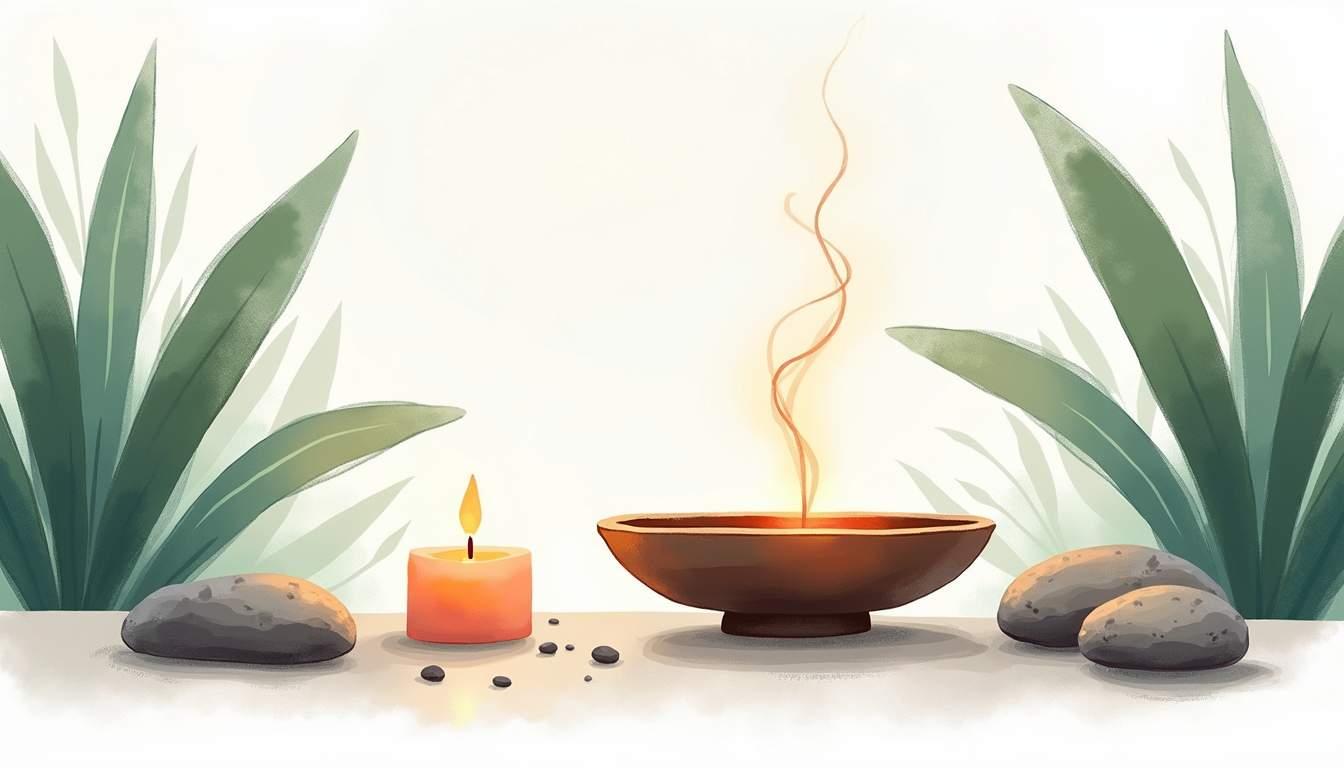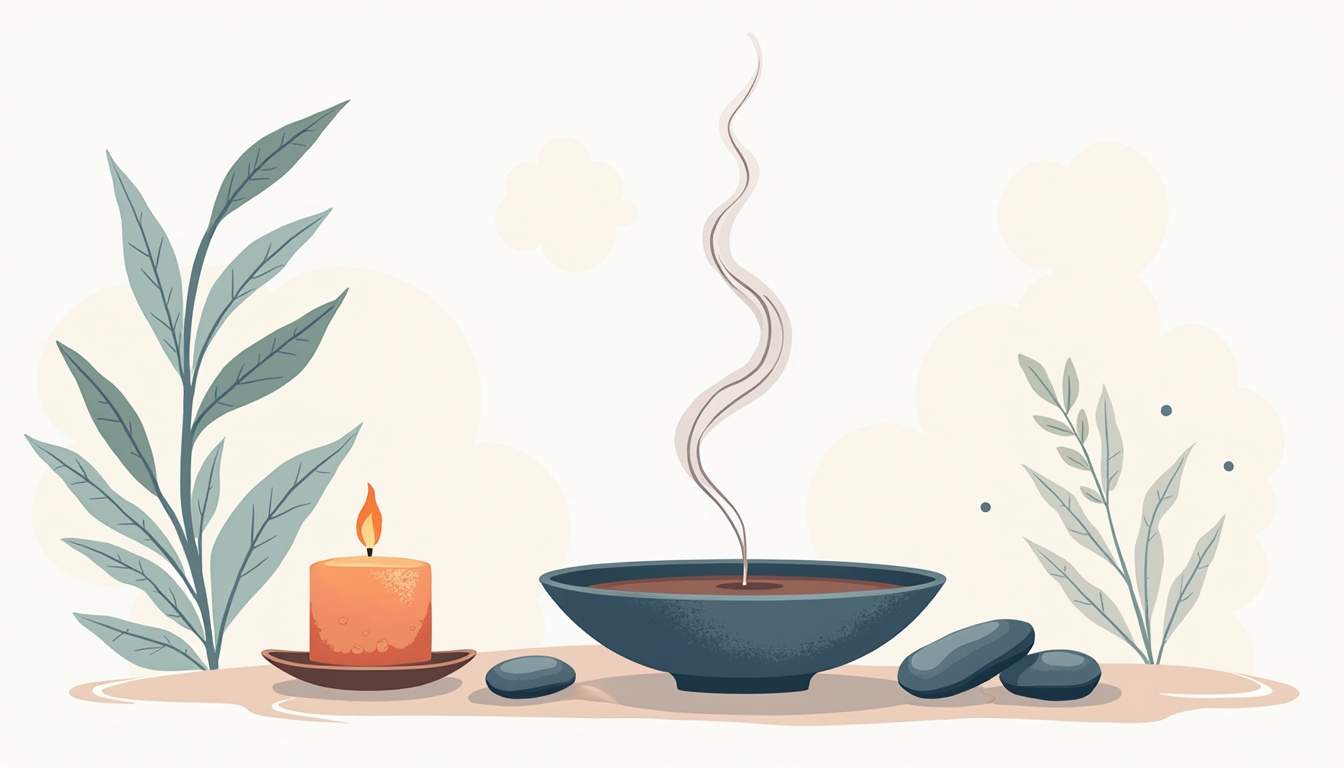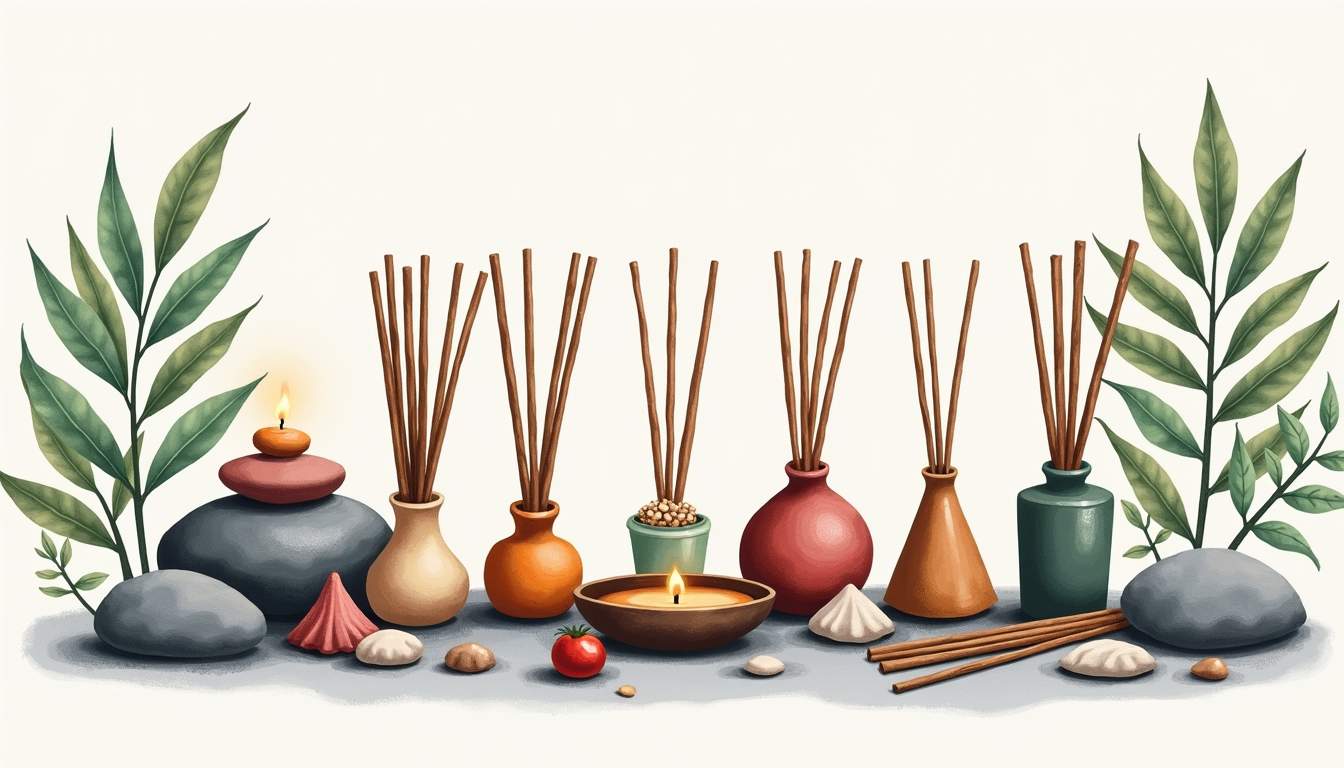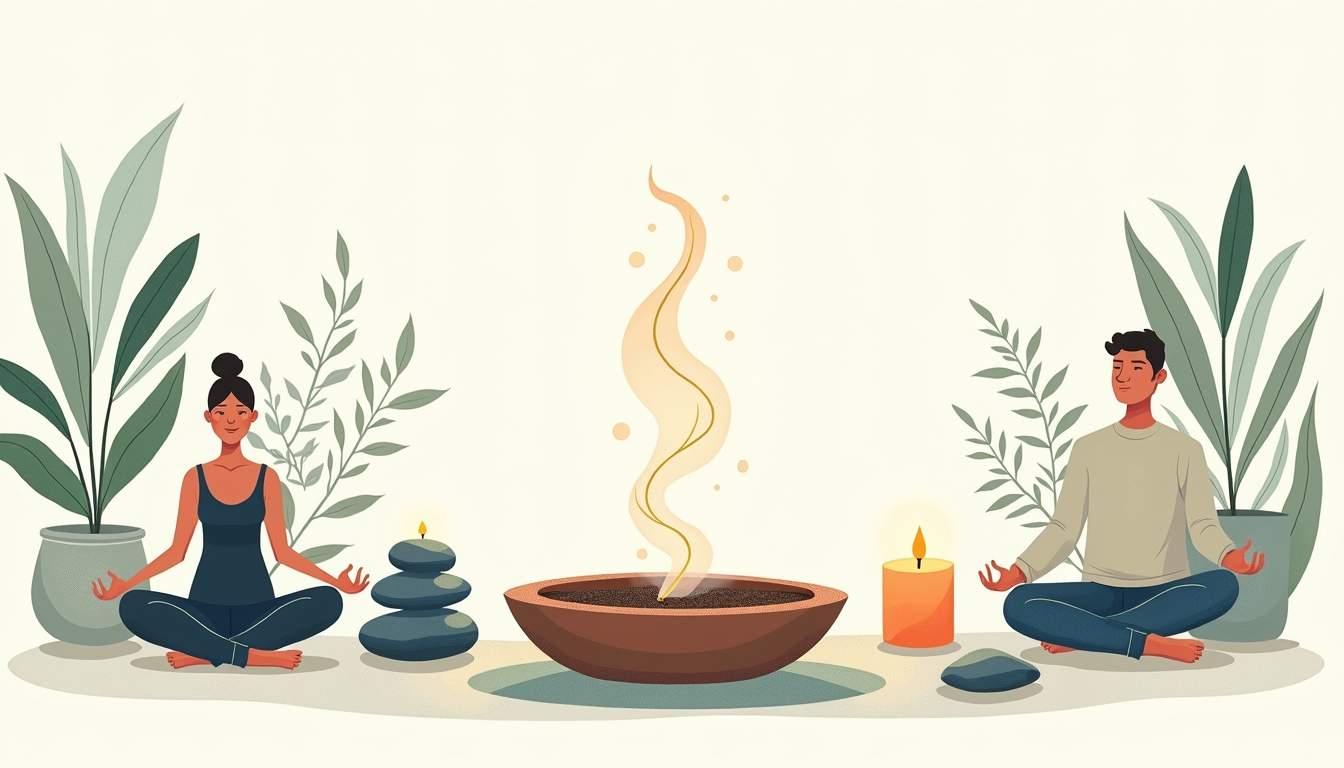
Meditation is a powerful practice that allows individuals to connect with their inner selves, reduce stress, and cultivate mindfulness. While many people focus on techniques such as breath control or visualization, incorporating incense into your meditation routine can enhance the experience significantly. The fragrant smoke of incense can create a calming atmosphere, helping to deepen concentration and promote relaxation. This article explores various ways to integrate incense into your daily meditation practice.
The Benefits of Using Incense in Meditation
Before diving into practical tips, it's essential to understand why incense can be a valuable addition to meditation. The benefits extend beyond just pleasant aromas; they can influence mood, focus, and overall meditation experience.

Creating a Calming Atmosphere
One of the primary advantages of using incense during meditation is its ability to create a serene environment. The right scent can evoke feelings of tranquility and peace, making it easier to settle into a meditative state. Scents like sandalwood, lavender, and frankincense are particularly known for their calming properties.
When the mind is at ease, it becomes more receptive to meditation techniques. The gentle waft of incense can serve as a sensory anchor, helping to ground thoughts and bring attention back to the present moment whenever distractions arise. The ritual of lighting incense itself can also be meditative; the act encourages mindfulness as you focus on the flame, the smoke, and the unfolding scent. This simple practice can become a cherished part of your meditation routine, enhancing the overall experience. For high-quality incense to elevate your practice, visit Aroma Paradise through the following link: https://aromaparadise.com/
Enhancing Focus and Clarity
In addition to promoting relaxation, certain incense scents can enhance mental clarity and focus. For instance, peppermint and rosemary are known for their invigorating properties, which can stimulate the mind and enhance concentration. This can be particularly beneficial for those who struggle with wandering thoughts during meditation.
By selecting specific scents that align with your meditation goals, you can tailor your practice to meet your needs. Whether seeking calmness or clarity, the right incense can help set the tone for a more effective session. Moreover, the olfactory system is closely linked to memory and emotion; thus, over time, specific scents can trigger a conditioned response that prepares the mind for meditation, making it easier to enter a focused state with each practice.
Connecting with Tradition
Incense has been used for centuries in various spiritual and cultural practices around the world. Incorporating it into meditation can connect practitioners with these rich traditions. Whether it's the use of incense in Buddhist rituals or in Hindu pujas, the act of lighting incense can serve as a reminder of the sacredness of the meditation practice.
This connection to tradition can deepen one's commitment to meditation and enhance the overall experience, making it feel more meaningful and purposeful. Additionally, exploring the historical significance of different incense types can enrich your practice. For example, in ancient Egypt, incense was burned in temples as an offering to the gods, believed to carry prayers to the divine. Understanding these cultural contexts can provide a greater appreciation for the incense you choose, transforming your meditation space into a sanctuary that honors both personal and collective histories.
Choosing the Right Incense
With countless types of incense available, choosing the right one can be overwhelming. Different scents can evoke different feelings and responses, so it's essential to select those that resonate with personal preferences and meditation goals.

Types of Incense
There are several forms of incense, including sticks, cones, and resins. Each type has its unique characteristics and burning methods. Stick incense is the most common and is easy to use, while cone incense burns more quickly and can produce a stronger aroma. Resin incense, often used in traditional practices, requires a charcoal disc for burning but offers a rich and complex scent.
Experimenting with different types can help identify which form best suits your meditation practice. Additionally, consider the source of the incense; natural, sustainably sourced options are often preferable for health and environmental reasons.
Selecting Scents
As mentioned earlier, different scents can elicit various emotional and mental responses. Here are a few popular options to consider:
- Sandalwood: Known for its grounding and calming properties, sandalwood is ideal for promoting relaxation.
- Lavender: This soothing scent is perfect for reducing anxiety and enhancing tranquility.
- Palo Santo: Often used for cleansing and purifying spaces, Palo Santo can create a sacred atmosphere.
- Frankincense: A traditional choice for meditation, frankincense is believed to promote spiritual awareness and connection.
- Peppermint: An invigorating scent that can enhance focus and clarity, making it suitable for more active meditation practices.
Ultimately, the best scent is one that resonates personally. It may be beneficial to try various options to discover which ones enhance the meditation experience the most.
Quality Matters
When selecting incense, quality is crucial. Low-quality incense can contain synthetic fragrances and chemicals that may be harmful when burned. Opt for natural, high-quality incense made from pure essential oils and organic materials. These options not only provide a better scent but also contribute to a healthier environment during meditation.
Setting Up Your Meditation Space
Creating a dedicated meditation space can significantly enhance the practice. A well-thought-out environment can help signal to the mind that it's time to meditate, making it easier to transition into a calm state.
Choosing the Right Location
Find a quiet spot in your home where you won't be disturbed. This could be a corner of a room, a balcony, or even a garden. The key is to choose a location that feels comfortable and peaceful. Natural light and fresh air can also contribute positively to the atmosphere.
Once you've identified the location, consider adding personal touches such as cushions, blankets, or meaningful objects that inspire tranquility. These elements can help create a space that feels inviting and conducive to meditation.
Incorporating Incense into the Setup
Place your chosen incense in a safe and stable holder, ensuring it is positioned away from flammable materials. Lighting the incense before beginning your meditation can help set the mood. Allow the scent to fill the space, creating an enveloping atmosphere that encourages relaxation.
It's also beneficial to establish a routine around lighting the incense. This ritual can serve as a mental cue that signals the beginning of your meditation practice, helping to prepare the mind and body for the session ahead.
Mindful Lighting Ritual
Consider incorporating a mindful lighting ritual into your practice. This could involve taking a moment to breathe deeply before lighting the incense, focusing on your intention for the meditation session. As the incense begins to burn, visualize the smoke carrying away distractions and negative thoughts, clearing the way for a more profound meditation experience.
Integrating Incense with Meditation Techniques
Once the environment is set, it's time to integrate incense with various meditation techniques. Different methods can be enhanced by the presence of incense, allowing for a more profound and immersive experience.

Guided Meditation
Guided meditations often involve visualization and deep relaxation techniques. Incorporating incense can enhance this experience by creating a sensory backdrop that complements the guidance provided. Choose a calming scent, such as lavender or sandalwood, to help deepen the relaxation process.
As you follow the guided meditation, allow the scent to wash over you, enhancing the visualization and making it feel more vivid and real. This can help anchor the experience, making it easier to return to that state in future sessions.
Mindfulness Meditation
Mindfulness meditation focuses on being present in the moment and observing thoughts without judgment. The presence of incense can serve as a focal point during this practice. When distractions arise, the scent can act as a gentle reminder to return to the present.
As you breathe in the aroma of the incense, use it as an anchor for your awareness. Notice how it interacts with your breath and how it fills the space around you. This can enhance the mindfulness experience and deepen the connection with the present moment.
Breathwork
Breathwork practices often emphasize the importance of conscious breathing. Pairing these techniques with incense can create a powerful synergy. As you focus on your breath, allow the scent to fill your awareness, enhancing the experience of each inhalation and exhalation.
Consider using invigorating scents like peppermint or eucalyptus during breathwork sessions. These aromas can stimulate the senses and enhance the feeling of vitality and energy, making the practice more dynamic and engaging.
Safety Considerations
While incense can enhance meditation, safety should always be a priority. Burning incense involves fire, and it's essential to take precautions to prevent accidents.
Proper Ventilation
Ensure that the space where you are burning incense is well-ventilated. This helps to dissipate smoke and prevents the buildup of potentially harmful substances in the air. Open a window or use a fan to circulate air, especially if you are using incense frequently.
Fire Safety
Always use incense holders designed for burning incense sticks or cones. Avoid placing incense near flammable materials, and never leave burning incense unattended. It's also wise to keep a fire extinguisher or a bowl of water nearby, just in case.
Allergies and Sensitivities
Be aware of any allergies or sensitivities to certain scents. If you or anyone in your household is sensitive to smoke or specific fragrances, consider using incense alternatives such as essential oil diffusers or herbal sachets. These options can provide similar benefits without the potential drawbacks of burning incense.
Conclusion
Incorporating incense into a daily meditation practice can significantly enhance the experience, creating a calming atmosphere, promoting focus, and connecting with tradition. By selecting the right incense, setting up a dedicated meditation space, and integrating incense with various techniques, practitioners can deepen their meditation journey.
As with any practice, the key is to experiment and find what works best for you. Whether it's the soothing scent of sandalwood or the invigorating aroma of peppermint, the right incense can transform meditation into a more enriching and fulfilling experience. Embrace the journey and enjoy the fragrant path to mindfulness.





